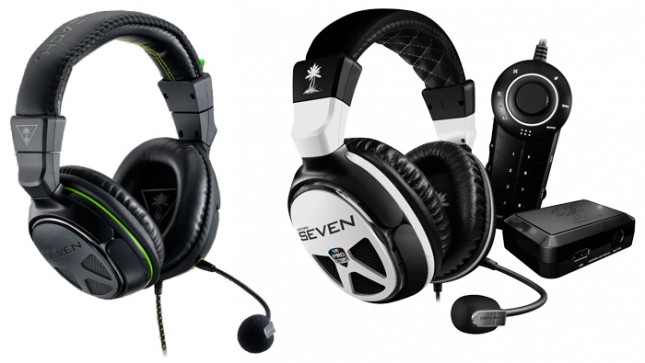Turtle Beach Ear Force Z SEVEN Gaming Headset Review
Final Thoughts and Conclusion
If you’ve been following carefully, the Z SEVEN is about two stories with very divergent plots. There’s the SEVEN headset which is shaping up as a solid piece of audio that stands well on its own while managing to look quite attractive. On the other hand, there’s the Audio Control Unit (ACU) that just falls flat on its face. If one so desires, the SEVEN headset can be bought on its own in the form of the M SEVEN and XO SEVEN. The problem with those versions is that they don’t appear to have separate headphone and microphone 3.5 mm plugs and instead using a 4-pole 3.5 mm plug for mobile devices.
So let’s first talk about what there was to like about the headset. It’s comfortable due to the generous padding, large ear space, and hinges that really spread out the pressure from the high clamping force. Without that pressure, the top of the headband would be supporting more of the headset’s substantial weight onto the top of the head. This so far seems to be a pattern with headsets that have much reinforcing material though one would have to be wary with the hinges on the SEVEN they don’t look the most convincing even though we haven’t yet broken our review sample.
The SEVEN headset packs some pretty good sound quality if it isn’t outputting audio from the sound processor in the Audio Control Unit. The headset has a good response from dedicated sound cards as it is able to push good detail in that combination. The sound character is close to flat with some warm signatures. The treble comes forward, but the bass is unexpectedly bland and controlled though still existent. As headphones, the SEVEN is good all-around though not particularly specialized for anything. The microphone isn’t out of line either as it keeps up with the high standards set by other high-end gaming headsets.
Now there’s the Audio Control Unit which by the way, which shouldn’t be avoided for its sound processing abilities. It’s rather unfortunate really that what we can assume that half the price one pays for the Z SEVEN package is for an external sound card and controller that’s not only a bit unintuitive to operate, but performs so poorly as a dedicated sound card. I had initially thought that the SEVEN headset sounded like garbage until I plugged it into an mp3 player. It was then I discovered that it was the Audio Control Unit that was holding back the headset. The ACU allows for passthrough from other sources which allowed usage of one of the ASUS Xonar cards used in our headset reviews and the SEVEN headset’s microphone without a 4-pole to dual 3-pole adapter.
Only so much can be assumed for the other SEVEN headsets from the Z SEVEN we tested, but the M SEVEN and XO SEVEN seem more sensible to buy since they’re about as no-nonsense the Turtle Beach SEVEN gets the Audio Control Unit is the real loser in the Z SEVEN package. Not as much can be assumed about the XP SEVEN as that’s geared for consoles and includes hardware that wasn’t tested. The headset on its own is $80 good and that’s actually decently close to what the M SEVEN costs. Yet, the Z SEVEN costs $212.06 on Amazon right now and that’s even more than the supposed higher up $199.99 XP SEVEN for some reason. Yet I still can’t readily recommend the SEVEN over the Kingston HyperX Cloud headset, the range of similar priced Plantronic headsets, or the SteelSeries Siberia V2. Those are all headsets from manufacturers that better understand what the PC gamer wants and thinks. I can’t help but think that Turtle Beach may have been entrenched in its game console headset ideologies when adapting the SEVEN for PCs.
Legit Bottom Line: The Turtle Beach SEVEN headset is gorgeous and outputs a great sound, but the Z SEVEN Audio Control Unit is confusing fluff that doesn’t even perform a tenth of its absurd price.
